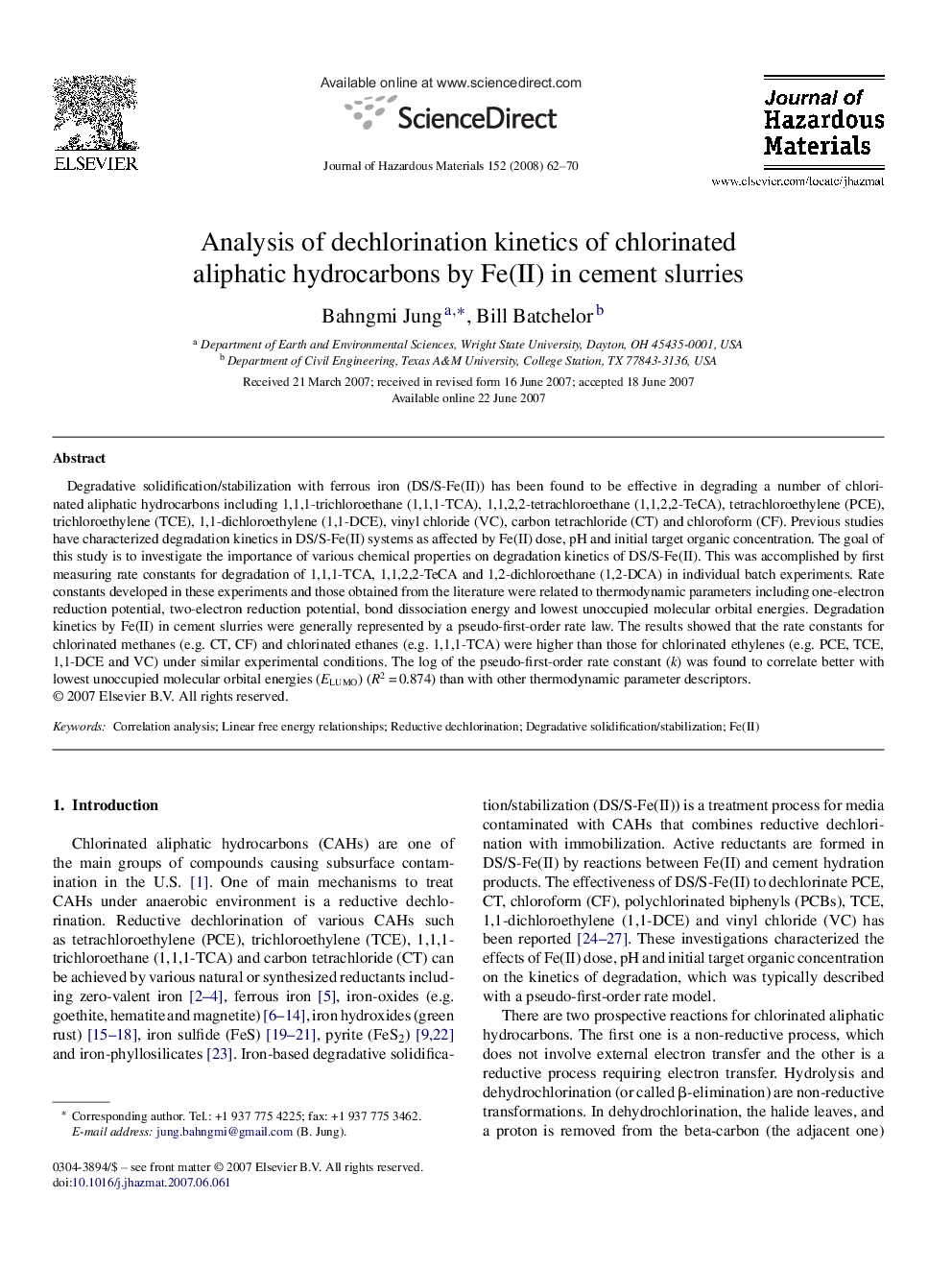| Article ID | Journal | Published Year | Pages | File Type |
|---|---|---|---|---|
| 583774 | Journal of Hazardous Materials | 2008 | 9 Pages |
Abstract
Degradative solidification/stabilization with ferrous iron (DS/S-Fe(II)) has been found to be effective in degrading a number of chlorinated aliphatic hydrocarbons including 1,1,1-trichloroethane (1,1,1-TCA), 1,1,2,2-tetrachloroethane (1,1,2,2-TeCA), tetrachloroethylene (PCE), trichloroethylene (TCE), 1,1-dichloroethylene (1,1-DCE), vinyl chloride (VC), carbon tetrachloride (CT) and chloroform (CF). Previous studies have characterized degradation kinetics in DS/S-Fe(II) systems as affected by Fe(II) dose, pH and initial target organic concentration. The goal of this study is to investigate the importance of various chemical properties on degradation kinetics of DS/S-Fe(II). This was accomplished by first measuring rate constants for degradation of 1,1,1-TCA, 1,1,2,2-TeCA and 1,2-dichloroethane (1,2-DCA) in individual batch experiments. Rate constants developed in these experiments and those obtained from the literature were related to thermodynamic parameters including one-electron reduction potential, two-electron reduction potential, bond dissociation energy and lowest unoccupied molecular orbital energies. Degradation kinetics by Fe(II) in cement slurries were generally represented by a pseudo-first-order rate law. The results showed that the rate constants for chlorinated methanes (e.g. CT, CF) and chlorinated ethanes (e.g. 1,1,1-TCA) were higher than those for chlorinated ethylenes (e.g. PCE, TCE, 1,1-DCE and VC) under similar experimental conditions. The log of the pseudo-first-order rate constant (k) was found to correlate better with lowest unoccupied molecular orbital energies (ELUMO) (R2Â =Â 0.874) than with other thermodynamic parameter descriptors.
Keywords
Related Topics
Physical Sciences and Engineering
Chemical Engineering
Chemical Health and Safety
Authors
Bahngmi Jung, Bill Batchelor,
